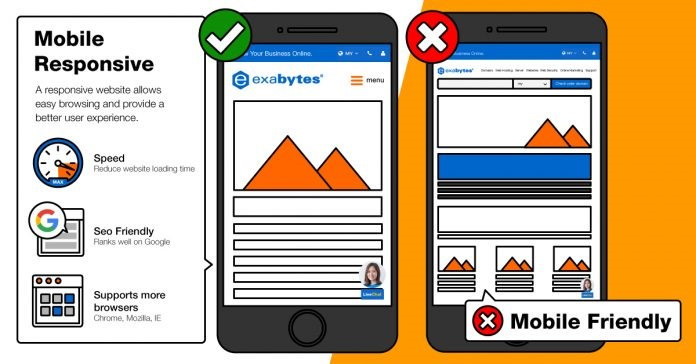Viva Resa: Your Gateway to Insightful Living
Discover news, trends, and tips for a vibrant lifestyle.
Swipe Right on Mobile-Friendly Websites
Unlock the secret to boosting your site’s success! Discover why mobile-friendly designs are a must-have for thriving online.
The Importance of Mobile-Friendly Websites: Why Your Business Can't Afford to Ignore Them
In today's digital age, having a mobile-friendly website is no longer just an option; it is a necessity. With over half of all web traffic coming from mobile devices, businesses that ignore this trend risk losing a significant portion of their audience. A mobile-friendly design ensures that your site is easily navigable, loads quickly, and provides a seamless user experience. If potential customers encounter a website that is difficult to use on their smartphones, they are likely to abandon it and turn to a competitor. Therefore, investing in a mobile-friendly website is essential for attracting and retaining customers.
Moreover, search engines like Google prioritize mobile-friendly websites in their rankings, making it crucial for your business's online visibility. According to recent statistics, websites that are not optimized for mobile are likely to experience higher bounce rates, which can negatively impact their overall search performance. To ensure your business remains competitive, consider implementing responsive design and optimizing loading speeds for mobile users. In doing so, you not only enhance user experience but also improve your site’s search engine ranking, ultimately driving more traffic and potential sales to your business.

10 Essential Tips for Designing a Mobile-Friendly Website
Designing a mobile-friendly website is crucial in today’s digital landscape, where a significant portion of web traffic comes from mobile devices. Here are 10 essential tips to ensure your site caters to mobile users:
- Responsive Design: Opt for a responsive design that adapts seamlessly to various screen sizes.
- Simplified Navigation: Implement a clean and simple navigation menu to enhance user experience on smaller screens.
- Optimize Images: Use properly sized images that load quickly to reduce bounce rates.
In addition to the above tips, consider the following:
- Touch-Friendly Elements: Ensure buttons and links are appropriately sized for touch interactions.
- Fast Loading Times: Optimize your site’s performance to ensure fast loading times; aim for under 3 seconds.
- Readable Font Sizes: Choose legible font sizes that enhance readability on smaller displays.
- Test Across Devices: Regularly test your website on various devices to ensure compatibility and user satisfaction.
By implementing these strategies, you can create a website that not only attracts visitors but also keeps them engaged.
Is Your Website Mobile-Optimized? Key Signs to Look For
In today's digital landscape, ensuring your website is mobile-optimized is no longer a luxury—it's a necessity. With more than half of all web traffic coming from mobile devices, a mobile-friendly site can significantly enhance user experience and improve search engine rankings. To determine if your website is effectively optimized for mobile, start by checking its loading speed. A mobile-optimized site should load quickly, ideally within three seconds. Use tools like Google PageSpeed Insights to assess performance and identify areas for improvement.
Another critical sign of a mobile-optimized website is its responsiveness. Make sure your website layout adjusts seamlessly to different screen sizes. You can test this by resizing your browser or accessing your site on various devices. Additionally, pay attention to touch targets; buttons and links should be easy to tap, with sufficient spacing to prevent user errors. Lastly, ensure that text is readable without zooming in, which is crucial for maintaining visitor engagement.